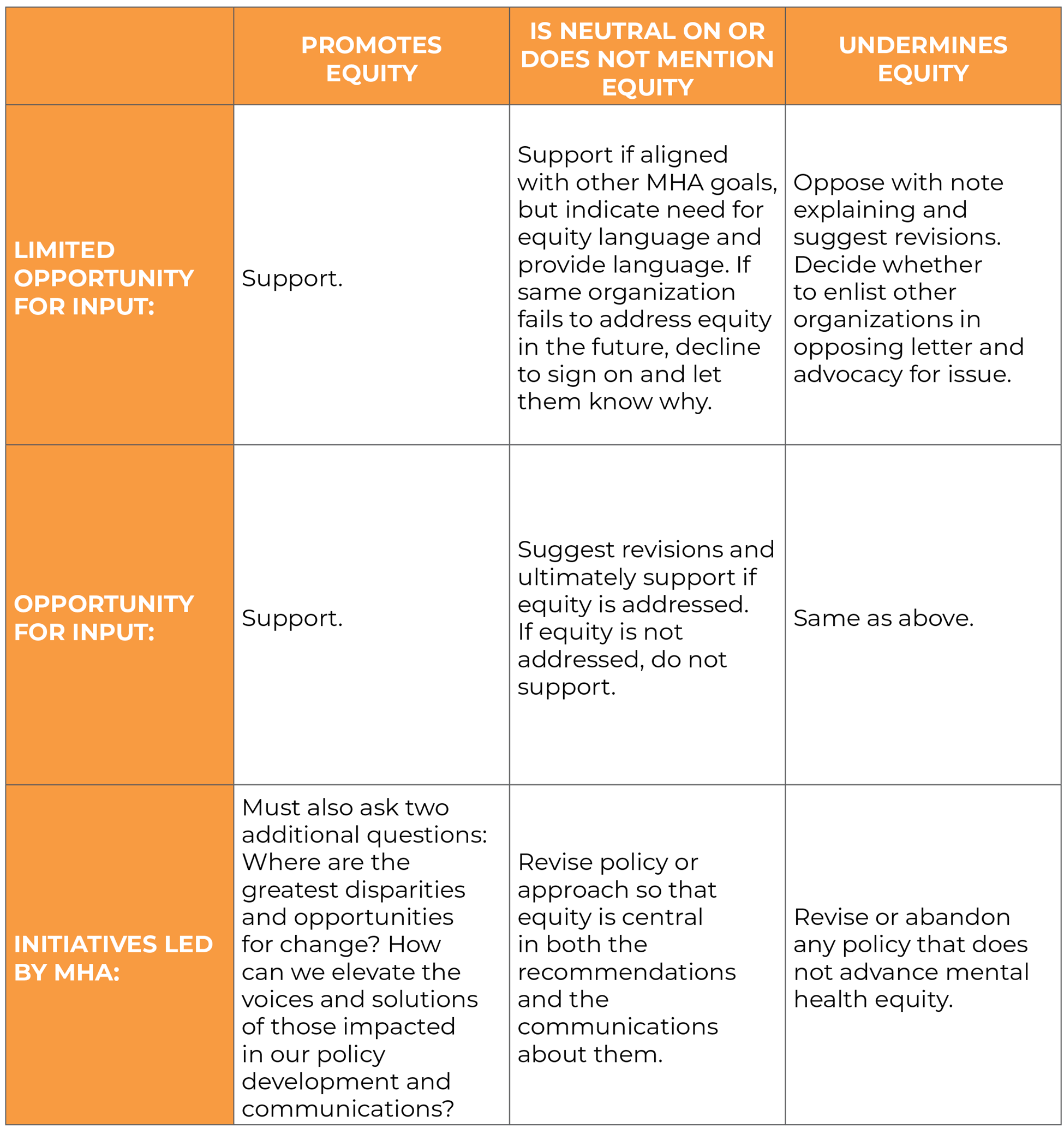Public Policy and Equity Rubric
Disclaimer: This document/rubric is in use by MHA as of March 4, 2021 to help us evaluate through an equity lens the development of and our potential support for public policy initiatives affecting behavioral health. We will make revisions as we gain deeper insights. Future versions will be dated and supersede earlier ones.
For each policy issue or proposal considered or developed by Mental Health America (MHA), it applies the following rubric to ensure that the organization advances equity in every action that is taken, elevating lived experience, and addressing legacies of systemic oppression.
To ensure that proposals advance equity[1], MHA asks itself:
- How would the policy impact specific populations that experience structural disadvantage[2], both positively and negatively? Does the policy serve the needs of different populations and protect from harm?
- Does the proposal communicate the impact on populations that experience structural disadvantage with data and description of barriers, including relevant historical context?
- Are populations that experience structural disadvantage being included in all aspects of the policy development, communications, and implementation?
- Are those implementing the policies (such as those providing services) reflective of the communities served, and how can MHA promote greater representation through the policy?
- Is data being collected to ensure that equity goals are realized and to document any changes in outcomes, access, and workforce?
Based on the particular opportunity and its answers to these questions, MHA applies the following rubric to guide its policymaking. When developing MHA policies, the organization asks two additional questions to reflect that furthering equity and promoting anti-racist policies is a journey requiring ongoing assessment of needs and opportunities and constant learning from voices with lived experiences. MHA is also in the process of a comprehensive initiative to guide MHA’s equity work that will inform future iterations of this document.

[1] To read more about what we mean by equity, see: https://www.rwjf.org/en/library/research/2017/05/what-is-health-equity-.html#:~:text=In%20a%20report%20designed%20to,be%20as%20healthy%20as%20possible.
[2] We use “structural disadvantage” to refer to those impacted by structural determinants related to public policy, read more here: https://equityhealthj.biomedcentral.com/articles/10.1186/s12939-018-0879-9

